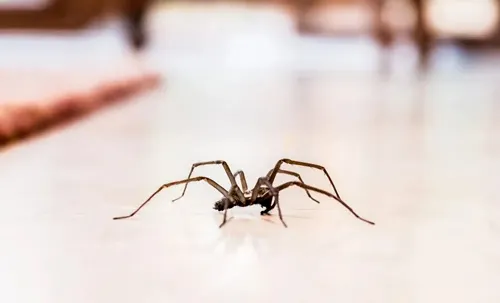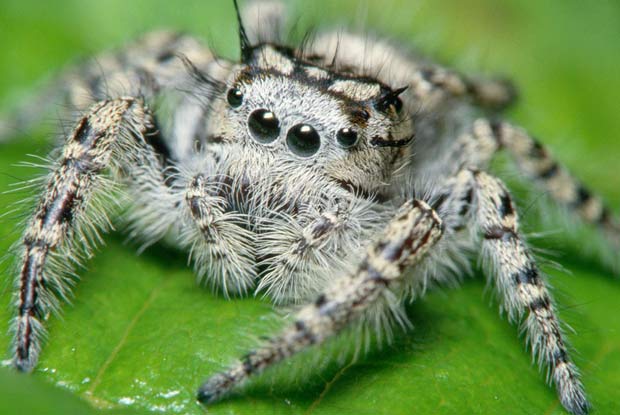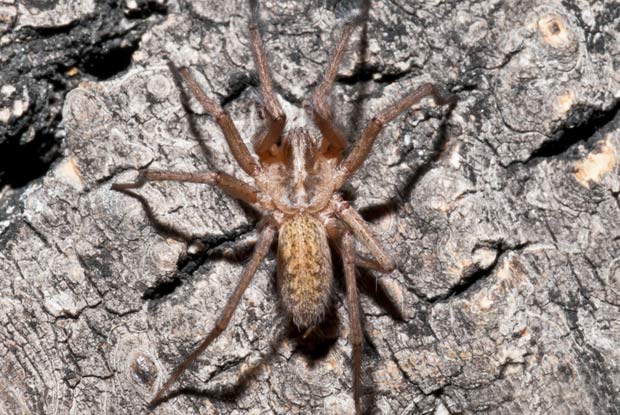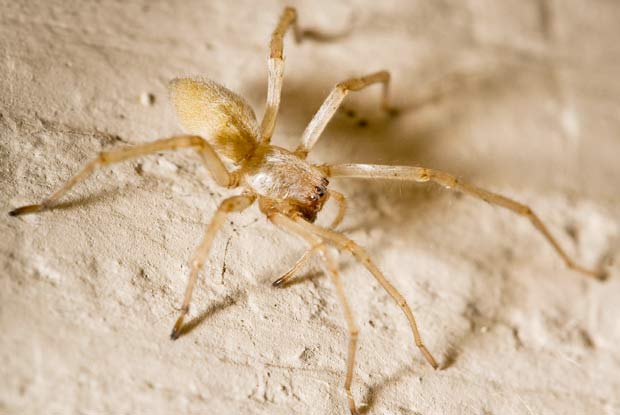Fast and Effective Spider Removal
A&A handles spider problems of all shapes and sizes. Jumping Spiders, Hobo Spiders, Giant House Spiders, Daddy Long Legs etc.
Serving Customers in These Areas and More!
Giant House Spiders
What is a Giant House Spider?
Also known as the greater European house spider, the giant house spider is the largest arachnid of the Genus Tegenaria. With exceptionally long legs, the giant house spider is known to reach up to 18mm in size. Specimens are most commonly brown in color, with a pale mark at the middle of the breastplate. On each side of the breastplate, four small circles are arranged longitudinally.



It was also once believed to be the world’s fastest spider, although the African Solifugids has since been identified as the faster of the two. On a flat surface, giant house spiders are known to move at velocities of 1.73 feet per second.
Giant house spiders are native to Europe and were introduced to North America via Vancouver Island in the 1920s. Coastal regions and beaches are most susceptible to giant house spider infestations. From Canada, the range of the giant house spider has spread east and north. These arachnids can be found from the Georgian lowlands to the Cascade Mountains.
Giant house spiders reside in flowerbeds, woodpiles and other sheltered, outdoor areas. Inside, they can be found in dark crevices and basements. In feral conditions, giant house spiders are found near shorelines or woods, where they dwell beneath driftwood, logs and rocks.
Another neat fact; spiders aren’t actually insects persay, they are actually called arthropods. They have two body regions, cephalothorax, and abdomen connected by tiny waits. They have no antennae, 4 sets of legs and 8 simple eyes, sometimes 6. Below the eyes are two jaws which end in a hollow fang that is connected internally to a poison duct. The males are usually smaller than females and may differ in coloration. The immature stages are egg and spiderlings, the latter closely resemble the adults except for size and coloration in most cases. Many spiders are associated with moisture and, therefore, are found in basements, crawl spaces, and other damp parts of buildings. Others will live in warm, dry places so are found in subfloor air-vents, in upper corners of rooms or in attics. All spiders in the Northwest prey on insects or whatever they can capture.
Daddy Long Legs
 What is a Daddy Long Legs?
What is a Daddy Long Legs?
Daddy long legs are known for a common myth that they are the most venomous spider known to man but are unable to penetrate this venom into humans, as they have no teeth or physical means to do so. While the various versions of this story are interesting, they are not true. In fact, daddy long legs are not spiders at all; they are more closely related to harvestmen. They do, however, hunt and eat other spiders, such as the brown recluse and black widow, which are particularly venomous.
Webbing is a strong indication of daddy long legs in your home and may be more of a nuisance than the creature itself. The webs are large and irregular and are commonly found in many domestic dwellings. They are found in many countries in the world and like to live in moderate and hospitable climates.
Why Should I Care?
They can become a domestic pest, but their webbing is more likely to be a nuisance. This thick, irregular webbing may start to take over plants and walls if not quickly controlled. These creatures can web at an alarming rate and often produce a new web everyday to catch fresh food from. Webbing may also be found in plants, possibly indicating an infestation of other pests, such as spider mites.
Jumping Spiders

One of the creepiest things about a spider is that they scuttle around on eight legs and seem to be able to get into any crevice in your house, but if you have ever come in contact with a jumping spider you have probably experienced the sensation akin to panic that these bounding arachnids impose.
If it’s not creepy enough that these spiders jump, they also happen to look like something out of a science fiction movie. Add to that the fact that this family of spiders is the biggest among spider species, making up about 13% of them, and you may begin to get a little…jumpy.
Aside from the fact that jumping spiders jump, their most distinguishing characteristic is their eye pattern. Jumping spiders have four pairs of eyes with the anterior median pair being very large. This gives jumping spiders an excellent sense of vision.
Jumping spiders are typically smaller than 0.8 inches, with females larger than males. These are some of the most brightly colored and interestingly marked spiders that exist. They have stout bodies, short legs, and the characteristically large eyes in the front of their head.
Because the jumping spider jumps, it is tempting to envision that it is a dangerous species of spider. In reality, the jumping spider is neither poisonous nor aggressive to humans. Like other spiders, the jumping spider will not “attack” humans or animals, but may bite in the case of a stressful situation. If a human or animal approaches a female’s egg sac or the spider is squeezed against a human’s skin it may bite protectively. The bite of a jumping spider is harmless unless the victim has an allergy to the spider’s venom. In this case, it is very important to seek medical attention to have the spider positively identified and the bite properly treated. If a jumping spider bite does exhibit symptoms, they may include minor swelling, redness, and itchiness. Apply ice to the bite and keep the area elevated but below the heart.
Wolf Spiders
 What is a Wolf Spider?
What is a Wolf Spider?
The Wolf Spider didn’t get its name because it howls at the moon, disguises as your Grandma, or blows down pig dwellings. Rather, the nocturnal Wolf Spider is an agile hunter, searching out and consuming its prey at night instead of luring it into a web, like other spiders (and yes, like a wolf). Wolf spiders are speedy little spiders; they have been known to move at a speed of two feet per second.
The full-grown Wolf Spider ranges in size from ½ inch to over an inch, and up to 4 inches when legs are spread. It is gray to brown in color with bristles on its body and legs. The Wolf Spider has an excellent sense of sight, perhaps related to its nocturnal hunting habits. Wolf Spiders have eight eyes (yikes!) arranged in three rows: the top row contains two medium-sized eyes, the middle row two large eyes, and the bottom row 4 small eyes. The eyes of a Wolf Spider also have reflective properties; if light is shined in their eyes at night they will produce a sort of glow that is easily distinguishable.
Because Wolf Spiders are hunters, they tend to be colors that blend in to their habitat. Camouflaging themselves for protection while on the hunt for prey, Wolf Spiders do not display bright colors like some other spider species. Most Wolf Spiders have white or black markings or lines on the upper side of their bodies.
Why Should I Care?
Wolf Spiders are venomous in the sense that they will eject venom into their victim with their bite, but a Wolf Spider bite is rarely dangerous and not lethal. The Wolf Spider is aggressive more to insects than to humans, but if provoked will bite humans.
Symptoms of a Wolf Spider bite include swelling, mild to sharp pain, and itching. The bite of a Wolf Spider has been likened to a wasp sting. Necrosis, or tissue damage, has been reported in conjunction with the bites of some South American species of the Wolf Spider. These instances, however, are most likely attributed to misidentification of the species.
Cellar Spiders
 Cellar spiders are usually found in dark corners of cellars, crawl spaces, and garages. They are very long-legged and often confused with daddy-long-legs. However, they are true spiders that spin untidy webs which are often quite extensive. These are the spider webs that Hollywood creates in bad horror films. When disturbed, they characteristically vibrate or shake in the web. Female cellar spiders carry eggs by her jaws in a loose silk sac until they hatch. Female long-bodied cellar spiders produce about three egg sacs over a lifetime, each containing 13-60 eggs each. Once the eggs hatch the spider lings crawl onto the mother’s body for a short time. Development from egg to adult usually takes about one year. Adult cellar spiders may live for an additional two years.
Cellar spiders are usually found in dark corners of cellars, crawl spaces, and garages. They are very long-legged and often confused with daddy-long-legs. However, they are true spiders that spin untidy webs which are often quite extensive. These are the spider webs that Hollywood creates in bad horror films. When disturbed, they characteristically vibrate or shake in the web. Female cellar spiders carry eggs by her jaws in a loose silk sac until they hatch. Female long-bodied cellar spiders produce about three egg sacs over a lifetime, each containing 13-60 eggs each. Once the eggs hatch the spider lings crawl onto the mother’s body for a short time. Development from egg to adult usually takes about one year. Adult cellar spiders may live for an additional two years.
In instances where cellar spiders are pests, it is due to the large amounts of webbing they produce. Many species of spiders consume their old web before making a new one, but cellar spiders do not. They continuously add to it, creating large amounts of webbing which becomes a nuisance to remove. Cellar spiders construct loose haphazard webs, often in corners, to catch insect prey. They hang upside down on the web until a food item gets tangled.
Although their bites are harmless to humans, their webs are unsightly and profuse: unlike other spider species, cellar spiders prefer to live within close proximity to one another, creating troublesome communities within human dwellings. They also lay lots of eggs and the webs can get out of control quickly if not taken care of.
Hobo Spiders
 What is a Hobo Spider?
What is a Hobo Spider?
Identification of the Hobo Spider has proven difficult. Professional identification using anatomical characteristics is best; however, Hobo spiders do have some distinguishable qualities that will help to positively identify a spider as the Hobo. The abdomen of the Hobo spider is marked by a chevron (V-shaped) pattern. The “V’s” of the chevron pattern go down the middle of the abdomen, pointing towards the head. Other markings may or may not be found on the sternum of the Hobo spider: a light stripe down the middle or light spots on the sides.
Originally indigenous to Europe, the Hobo Spider is thought to have come to the Pacific Northwest region of the United States in the 1930s (any connection to hobos and the Great Depression is coincidental.) In Europe the Hobo Spider was found mostly in fields and far away from human habitation where its major competitor, the House spider, hogged all the house space. In North America the Hobo’s range has spread throughout the Pacific Northwest and has been reported as far west as Idaho, Wyoming, and Utah. Its nomadic character, however, has proven that the Hobo spider can be successful in various habitats and has the potential to spread into other U.S. territories.
Why Should I Care?
The bite of the Hobo spider is venomous; however, the Hobo Spider will only bite a human when under stress, such as being squeezed or smashed against human skin. If a female Hobo spider feels her egg sac is being threatened, she may also attack. Most Hobo spiders do not reside in man-made structures but may come inside in search of a mate. For this reason Hobo spider bites do not typically occur in the home. The bite will cause localized pain and swelling and can cause necrosis (tissue death).
Hobo spider bites have not been known to be fatal. In fact, about half of Hobo spider bites do not inject venom and therefore display no symptoms, but lesions caused by its bite can take months to heal and begin as a small red bump. The bump may begin to blister and scab over between 24 and 36 hours after the bite, then “oozes” as it heals. Systemic symptoms of the Hobo bite include headaches, obstruction of vision, vomiting, and a feeling of discomfort or uneasiness.
Yellow Sac Spiders
 What is a Yellow Sac Spider?
What is a Yellow Sac Spider?
Yellow Sac Spiders are relatively small (10 mm body length), and are yellowish in color; they are difficult to distinguish from one another.
Some yellow sac spiders are attracted to the smell of hydrogen oxide in gasoline. An unusual double pipe configuration in the Mazda6 led to a recall of around 65,000 Mazda vehicles in the US, Canada, Mexico and Puerto Rico from the 2009-10 model years after it was found that yellow sac spiders were building nests in the fuel line of the vehicles.
In the autumn the food is disappearing and the yellow sac spider moves indoors to find food. Indoors it is often seen on walls and around different constructions. If disturbed it drops to the floor. Egg sacs are laid in corners of all sorts. The egg sacs are white and spunk with silk. The female may guard its egg sac one way or the other so one has to be careful removing egg sacs from a yellow sac spider.
During the summer when there’s plenty of food the yellow sack spider prefers to live on trees, shrubs, and in low vegetation close to open expanses, such as fields. Occasionally it’s found in cotton crops.
Why Should I Care?
Bites generally produce instant, intense stinging pain, not unlike that of the sting of a wasp or hornet. This may be followed by localized redness, swelling and itching; these manifestations may or may not evolve into a necrotic lesion, but when that occurs healing is usually complete within eight weeks. Side effects may include chills, fever, headache, dizziness, nausea, anorexia, and sometimes shock.
